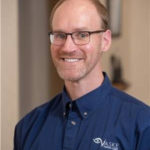By Michael Vaske, OD

March 31, 2021
Advanced diagnostic equipment provides patients with essential services while offering an opportunity for great profitability. Sometimes when you invest in instrumentation, however, it takes time to find your footing as you pay off loans and establish the practice protocols needed to maximize use of the technology. Here are a few instruments with significant room for growth in care and profitability as I expand and hone my medical eyecare services.
Optos Optomap
The Optos has allowed me to improve the preventative care of patients, allowing a much more in-depth view of the retina. It aids in my diagnosis of disease, allowing me to give patients a jump start in treating sight-threatening conditions.
It took about 3.5 years to start profiting from the $86,000 I spent on this instrument. I took out a loan with monthly payments of $1,650 to acquire my optomap. I initially offered imaging on it as an add-on to the patient’s exam. The patient was given this imaging as an option that provided additional wellness screening. I was only getting a 50 percent acceptance rate at first. It took a while to break even. With the need to continue to pay off the loan taken into consideration, my optomap generates $18,700 annually. Once my loan is paid off, that number will increase dramatically. That number also does not include the profit from additional services delivered based on findings from the images taken with the optomap, and the practice brand this instrument allows me to establish.
A big part of the profitability stems from the patient coming back for appointments because they trust in the exam I delivered. I may have shown them a picture from the optomap or the slit lamp camera to detail the health of the eye. I can show the patient all is normal, or point out issues we have to address right away. In addition to the benefits to the patient’s care, the technology makes for a memorable experience in my office. It makes the patient go, “WOW, I’ve never had an eye exam like that!”
Since the start of the pandemic, I have raised my fees and performed imaging using the optomap on all patients. I always felt it was important for everyone to have this imaging done, and I didn’t want to feel like I have to “sell” the importance of having it done at all comprehensive exams. The loan will finally be paid off this summer. It will be like getting a raise next year.
Oculus 5M Keratograph
Colorado, where my practice is based, is one of the toughest places to wear contacts because of the elevation and the low humidity. I always had patients complaining about their dry eyes. I would offer them different eye drops and hope it would improve their symptoms. I wanted a way to quantitatively measure a patient’s dry eye besides just measuring tear break-up time. There are many articles on how to treat dry eye, but if you are only telling a patient they have dry eye, the treatment protocol doesn’t have any weight behind it. That’s when I decided to expand my ability to diagnose and treat dry eye, and began thinking about buying the Oculus 5M Keratograph.
I started watching webinars on dry eye to see how the experts diagnose and treat the condition. The 5M was what they were using to get a quantitative measurement on a variety of factors associated with dry eye. I also noted that they could bill for a medical diagnosis after using the instrument.
With this instrument, we can do a dry eye workup on the patient and then print out the results to show how or why their eyes are dry. Now I can recommend specific products and protocols based on the outcome of the testing to help the patient with their symptoms.
Other Articles to Explore
The final step in adding this instrument to my practice was going to a trade show to demo and purchase it 1.5 years ago. Oculus had a no interest for six months special for attendees of the show, so I purchased the instrument on the spot. The company had a local rep deliver, install and train my staff on it within six weeks after that.
It cost $30,000 to acquire the Oculus using a loan with monthly payments of $913. So far, the instrument is generating $5,193 annually, taking into consideration that I am still paying off the loan. I expect that profitability to grow substantially after the loan is fully paid off, and after I set up a dry eye protocol/clinic to utilize the equipment to its fullest.
TelScreen Slit Lamp Camera
I have had the TelScreen for over four years, using it mostly for patient education purposes. I don’t do as much billing with it as I should. I mostly use it for educational purposes. It allows me to take a video or picture of a piece of metal, corneal abrasion or a lid abnormality to show the patient. This education lays a strong foundation for patients to understand my diagnosis and the treatment I am prescribing.
It’s like going to the dentist, and he says you have cracked tooth that needs a crown ASAP or you can wait on it. If he shows you the problem with your tooth using a video in which you can see exactly what he is talking about, it instills confidence in the treatment plan and the need to address the problem right away. You no longer wonder whether immediate treatment is really necessary.
I paid $45,000 for this instrument, taking out a loan with monthly payments of $225. The instrument is currently generating just $396 annually because I have only billed 18 cases so far to medical plans. As I make this technology a greater part of my medical eyecare, and bill for it as I should, that number will increase substantially.
This is yet another technology with benefits to care and profitability poised to grow on par with the growth of my practice’s medical eyecare services and better practice protocols.
 Michael Vaske, OD, is the owner of Vaske Vision Care in Parker, Colo. To contact him: drvaske2010@gmail.com
Michael Vaske, OD, is the owner of Vaske Vision Care in Parker, Colo. To contact him: drvaske2010@gmail.com

























